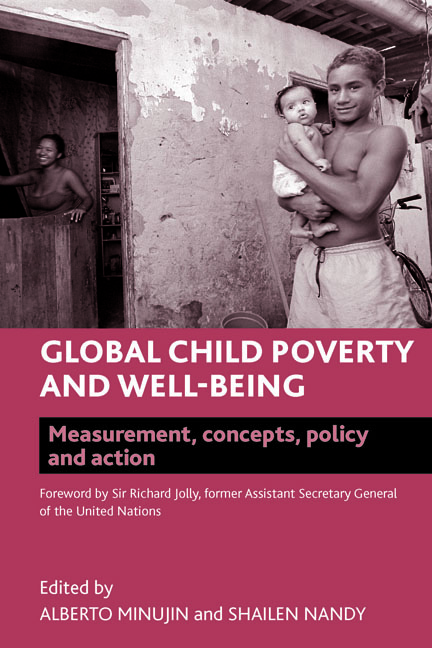nine - Enhancing the fight against child poverty in the European Union: a benchmarking exercise
Published online by Cambridge University Press: 07 September 2022
Summary
The fight against child poverty: a European Union priority
Out of the 17% of Europeans at risk of poverty, 20 million are children. In most countries of the European Union (EU) children are at greater risk of poverty than adults, and this situation has not improved since 2000. In March 2006, member states were asked by EU heads of state and governments ‘to take necessary measures to rapidly and significantly reduce child poverty, giving all children equal opportunities, regardless of their social background’ (European Council presidency conclusions March 2006). In response, member states chose tackling child poverty as the focus theme for 2007 in the context of the EU social inclusion strategy, a framework for policy cooperation between countries.
Social policy in the EU remains the responsibility of member states. EU cooperation in the fight against poverty therefore rests on regular reporting, peer pressure and mutual learning (see Box 9.1). In the absence of any binding mechanism, a large part of the effectiveness of the method lies in the capacity to analyse thoroughly the situation of each country in an international context. It is also crucial to be able to assess whether the policy priorities and corresponding policy tools identified at national level are appropriate to meet the commonly agreed objectives. Mutual learning – one of the key features of EU policy coordination − becomes easier when countries can compare their respective strengths and weaknesses on the basis of a common framework.
In 2007, member states conducted a benchmarking exercise (based on widely available indicators) that promoted a common understanding of the determinants of child poverty in each country. This work helped identify common challenges and explain why considerable differences remain across member states in the situation regarding children. Ultimately, the findings were meant to increase the knowledge base informing governments in their use of the main policy instruments at their disposal: labour market policies that support parental employment and tax and benefit systems that support children and families both financially and through the provision of key services (for example, childcare).
These findings were published in the final report, Child poverty and well-being in the EU: Current status and way forward, adopted by the Social Protection Committee (SPC) in January 2008 (European Commission, 2008a).
- Type
- Chapter
- Information
- Global Child Poverty and Well-BeingMeasurement, Concepts, Policy and Action, pp. 207 - 244Publisher: Bristol University PressPrint publication year: 2012

